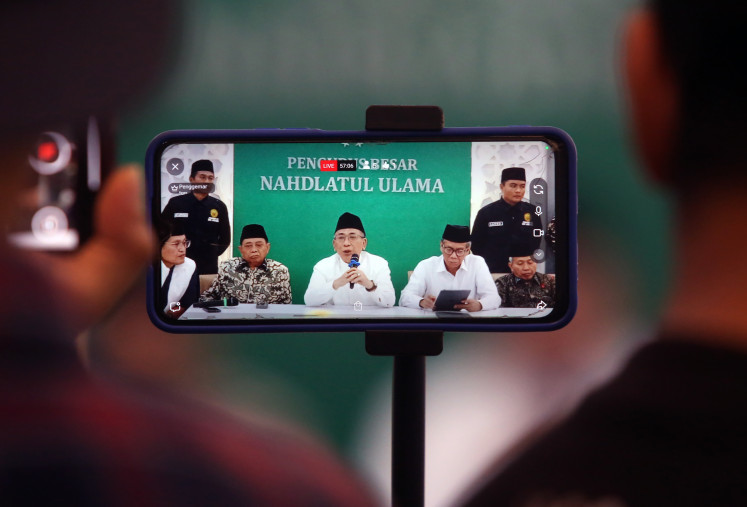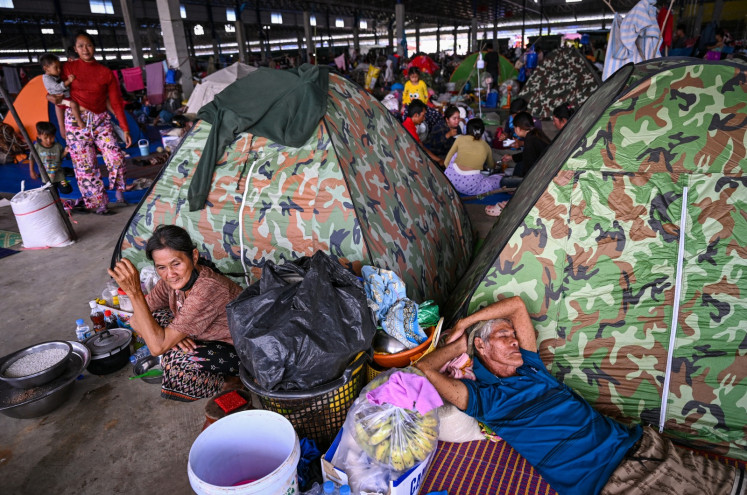Popular Reads
Top Results
Can't find what you're looking for?
View all search resultsPopular Reads
Top Results
Can't find what you're looking for?
View all search resultsWhat Sari Roti reveals about middle-class Muslim Indonesians
The contestations over Sari Roti become more evident in new forms of Indonesian Muslims’ consumption, when they are placed within the process of Islamization after the New Order era.
Change text size
Gift Premium Articles
to Anyone
F
or the past few months, the Basuki ‘Ahok’ Tjahaja Purnama blasphemy case has provoked debates among public figures, religious scholars, politicians and the general Muslim public.
The push for legal action against his statement to people in the Thousand Islands regency was followed by a massive march of Islamic people through the city of Jakarta in Nov. 4. Even after Ahok was declared as a suspect, the anger against incumbent the Jakarta Governor, concomitant with the disappointment toward the administration, provoked another massive rally on Dec. 2, which has been dubbed as the ‘212 Action’ [Aksi 212].
Under the auspices of ‘defending Islam’ [Aksi Bela Islam], a torrent of protesters and some organizations marched through the city for a mass prayer at the National Monument (Monas) park.
The protest was led in an orderly fashion, but a number of Sari Roti volunteers giving away free bread have stolen public attention as the carried signs that said, “gratis untuk Mujahid [free for Muslims]”. When the photos went viral, people thought the bread manufacturer, Nippon Indosari Corpindo, supported the rally. In order to clarify the misuse of the logo and brand in this mass prayer, the company issued a public statement on its website, claiming that their bread products were not involved in the rally and were committed to preserving Indonesia’s motto Bhinneka Tunggal Ika (unity in diversity).
This statement shifted public praise toward Sari Roti. Netizens angry with Sari Roti swarmed social media with photos of another brand of bread as a substitute, while others, who felt there was nothing wrong with the company’s statement, posted their pictures with Sari Roti products.
(Read also: Sari Roti under fire after denying involvement in 212 rally)
Looking at how consuming bread has been used to signify religiosity reveals the production of middle-class Islamic Indonesians’ identity through consumption and public piety.
There is a significant difference between eating and consuming. While the former simply refers to a means to survive, the latter articulates the cultural facets—the patterns and investments of values that subsequently produce and construct a particular identity. In other words, consuming is also producing. As the distinction between private and public has also been blurred, consumption perceived as a private and intimate activity between commodity and self has been also challenged.
Since what we consume constructs our identity and even signals our political stance, consuming also becomes public—particularly how self has been represented in collective space. The contestations over Sari Roti become more evident in new forms of Indonesian Muslims’ consumption, when they are placed within the process of Islamization after the New Order era.
The collapse of Soeharto’s authoritarian regime in 1998 has signified Indonesia’s transition to democracy. As freedom of expressions has been guaranteed, the previous suppressed groups—in this case, Islamic groups—proliferate in a political arena. While in the New Order, their ideology was repressed, the Reformation era provides a fertile ground for them to articulate their ideas and enact a number of ‘moral-based’ or Sharia-influenced policies through decentralization. On the other hand, Sonja van Wichelen in Religion, Politics, and Gender in Indonesia (2010) asserts that the discontentment with the New Order priority toward the secular middle class has partly unfolded ‘the other middle-class’—including teachers, students, and middle-level urban workers with no social power. Nevertheless, they did not harvest the benefits of the New Order’s development agenda. Unlike oversimplified assumptions that strong religious devotion is commonly associated with lower education and socio-economic status, the other urban middle-class defines modernity in a different configuration, in which Islamism is inherently permeated and to be strictly observed.
As a response, Islam has also been increasingly commodified. Equally important with specific lines of product targeting Muslim Indonesians and the increasing representation of modern Islam in popular culture, like Ayat-Ayat Cinta (verses of love), it is not strange to see some Indonesian Islamic clerics have their own show of religious seminars and missionary endeavors [dakwah] on television. In a similar vein, the increase of veiling among Muslim women not only indicates the explicit patterns of public religiousness but also the emergence of the Muslim middle-class as a powerful social class with purchasing power, that increasingly distinguishes itself from secular modernity. The association of religiosity with ‘backwardness’ and ‘un-modern’ gradually fade.
The first Indonesian writer to be nominated for the Man-Booker Prize, Eka Kurniawan wrote about his personal experience in finding a school for his daughter, Kinan. Comparing this with his growing-up experience in a village, which had loads of ‘freedom’, the urban-middle class is nowadays very much preoccupied with both sacred and secular concerns. On the one hand, they want good quality education for their kids, while on the other hand, they also desire a religious school to safeguard the moral fiber of their kids. “It’s a religious school, isn’t it? They teach the children English, don’t they?” explicitly illustrates the current hysteria of middle-class families in Jakarta—they want success both in heaven and on earth for their kids.
Having more consumption choices, the Sari Roti debates demonstrate how middle-class Muslim Indonesians, who are familiar with social media, factor in their religiosity into their consumption decisions. Furthermore, the politicization of the upcoming gubernatorial election along the lines of religion and ethnicity exacerbates these sentiments. What matters now is the rise of conservatism that fits in with market logics, which give birth to a new social class with purchasing power. Hence, it is no exaggeration that religiosity, capitalism and modernity are not always contradictory, as we might have thought before. They are malleable, adaptive and interactive. They connect together, which shapes the meanings involved in being Muslim Indonesians at this time.
***
The writer, who obtained his Master’s in public policy from the National University of Singapore, is the writer of Coming Out and a lecturer of gender and sexuality studies. He is currently pursuing his Masters by Research in Gender and Cultural Studies in The University of Sydney. See other writings by Hendri Yulius here.
---------------
We are looking for information, opinions, and in-depth analysis from experts or scholars in a variety of fields. We choose articles based on facts or opinions about general news, as well as quality analysis and commentary about Indonesia or international events. Send your piece to community@jakpost.com. For more information click here.










